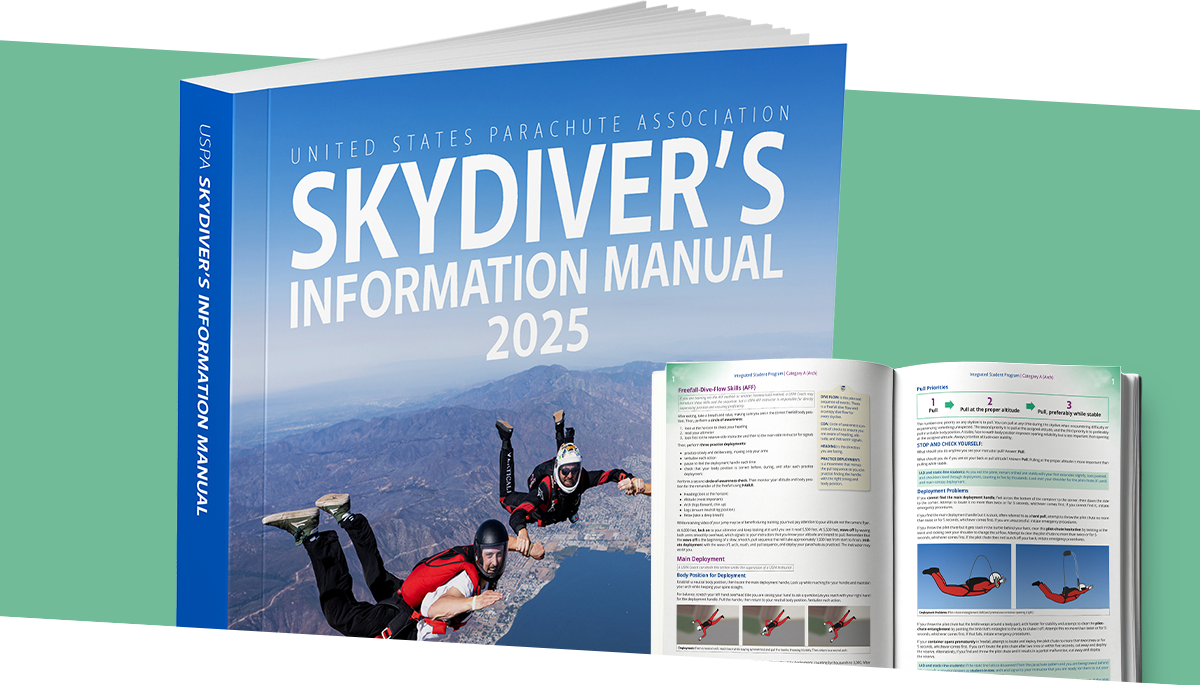2025 Skydiver's Information Manual
The USPA Skydiver’s Information Manual (SIM) is the foundational textbook and reference manual for all skydivers, from beginner to highly experienced. It provides the organization’s Basic Safety Requirements, and more in-depth information about the sport, including:
- Curriculum for student skydivers (the USPA Integrated Student Program)
- General recommendations for all skydivers on emergencies, currency training, equipment, weather and more.
- Recommendations for advanced skydiving such as freefall formation flying, night jumps, wingsuit flying and advanced canopy piloting.
- Exhibition jumping
- Licenses, ratings and awards programs
- Guidance on Federal Aviation Administration documents that relate to skydiving
USPA, with the help of many experts, gave the SIM a complete update for the 2025 edition. The result is a clear and comprehensive handbook for all skydivers in the U.S.

Purchase Print and E-Book Versions
Read Digital Versions
SIM Translations
By downloading or using SIM translations, you agree to this disclaimer:
Translations of the Skydiver’s Information Manual (SIM) and Instructional Rating Manual (IRM) are prepared by third-party translators in an effort to make United States Parachute Association (USPA) documents accessible to those who may not read English. The official and binding documents which govern USPA are the English versions. While good faith efforts are made to provide accurate translations, portions may be incorrect and may conceivably communicate incorrect safety standards. In addition, some terminology when translated may not be completely accurate due to language differences and limitations. If you would like to report a translation error or inaccuracy, we encourage you to contact us.
Please note the revision of any copy and verify that it is no earlier than the current revision. Any edits made to the original English revision after the translated revision would not be reflected in the translation. Readers may only use outdated revisions if they understand all changes made in more recent revisions. Rating holders are responsible for using and teaching the most current revision.
Any person or entity who relies on translated or outdated revisions does so at their own risk. USPA shall not be responsible or liable for any errors, omissions or ambiguities in the translated versions of documents or for any consequences of any such errors, omissions or ambiguities, including personal injury or death. USPA shall not be responsible or liable for any losses, damages or harm, including personal injury or death, caused by the reliance on the accuracy or reliability of translated documents, translated information, outdated documents, or outdated information.
2025 SIM Translations
Older SIM Translations
Available Change Documents